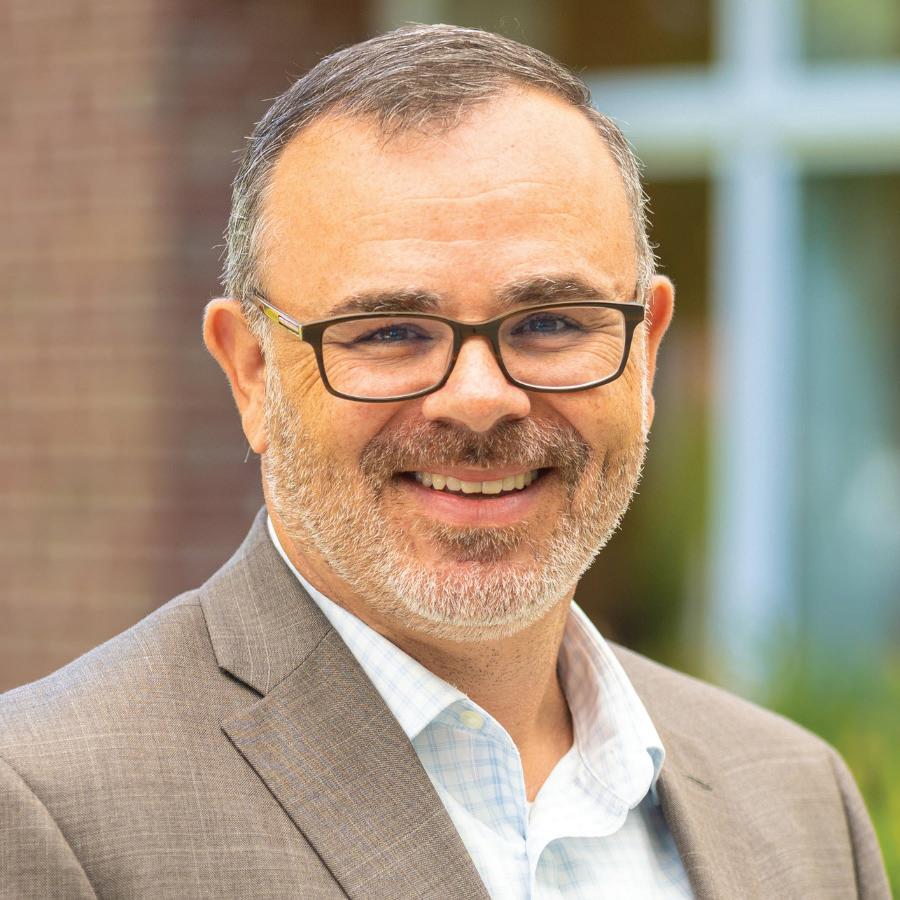
4 minute read
A VISION FOR HOPE
In the tranquil landscapes of Salem, Virginia, a remarkable transformation is underway. The HopeTree Rezoning Project, a visionary initiative aimed at repurposing space on HopeTree's Salem campus and nurturing community bonds, is taking root. The plan is based on the core design principles of “new urbanism” that embrace walkability, sustainability, connectivity, and the adaptive reuse of existing buildings. Along with updating HopeTree facilities, the plan envisions a mix of market-rate homes, recreation amenities and public gathering spaces. The plan is designed to seamlessly integrate with the existing landscape to not only take advantage of the property’s views, topography and green spaces, but to minimize the community’s impact on the environment.
Why Now?
The question has been asked, why is HopeTree considering this kind of project now? The reality is, we are at another inflection point in the history of our organization. In the last 30 years, HopeTree has changed tremendously. The work we do today is much more challenging and much more specialized than at any point in our history. Residential care in a congregate, campus style setting is no longer the preferred method to serve youth and adults. Additionally, funding sources have mandated that group homes be integrated into the communities to aid in their care.
• While there will continue to be a need for shortterm residential care, HopeTree will never have hundreds of children living on the Salem campus again. The most we will be able to serve on the Salem campus is 16 residents. Previously, when children came to the Baptist Home, most stayed until they turned 18. Today, the youth that come to HopeTree stay on average, six months.
• Most of the buildings on campus were constructed between 1900 and 1966 and are not equipped to provide quality residential, mental and behavioral health care today. Furthermore, we have six buildings that are vacant and will never be used by HopeTree for services again.
Throughout this process, we have continuously been mindful of three goals for this project:
1. Honor our History.
We want to honor HopeTree’s history by staying on the property where it was founded in 1890. We will not tear down any of the beautiful and historic buildings on the campus and will continue to tell the story of HopeTree’s rich and meaningful history. Plans include investments in a new museum and place placards on all of the historic buildings to tell the story of what they once were.
2. Position HopeTree for the future.
We will do this by investing millions of dollars to create new, modern homes for residents and spaces for team members to serve the community. We also plan to invest in new, nontraditional methods of therapy to better serve youth and families.
3. Do something that the community would be proud of.
We will do this by partnering with the community, city leaders, team members, and development team to bring something unique and meaningful to the City of Salem.


Walking A New Path
At the heart of the project are design principles that prioritize walkability, sustainability, connectivity, and repurposing of existing structures. The plan not only aims to revitalize HopeTree facilities but also envisions a thoughtfully curated mix of market-rate homes to foster a diverse community. Recreation amenities and public gathering spaces throughout the property will create a more vibrant, inclusive, and connected sense of community.
The project's plan includes the development of mixed-use areas designed to meet the diverse needs of Salem's population. This vibrant development will feature a mix of residential, recreational facilities, and a few small commercial establishments, fostering a dynamic environment where residents can live, work, and play in close proximity. Whether it's a corner grocer, a cafe, the walking trails, or green spaces, this new plan will create a dynamic new destination for the City of Salem.
“This process began with three goals. Number one, to honor HopeTree’s history. Number two, to position us for the future. And number three, to create something Salem will be proud of. The current zoning for this property would result in a far less desirable outcome—upwards of 200 homes with dozens of driveways cutting into Red Lane. Just building housing does not meet our third goal and isn’t better for Salem.”
-JON MORRIS, PRESIDENT & CEO, HOPETREE FAMILY SERVICES











